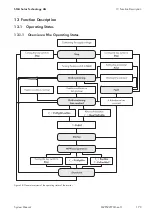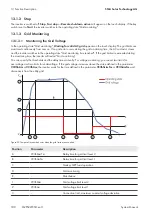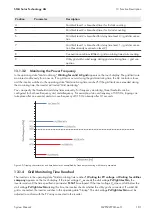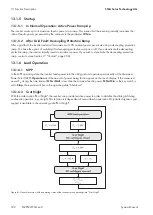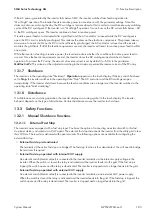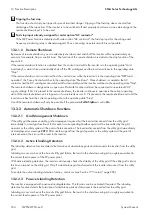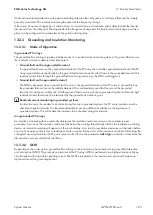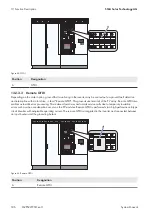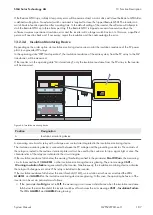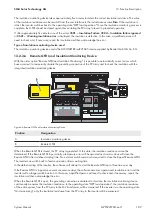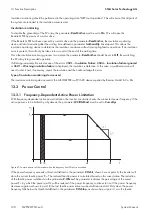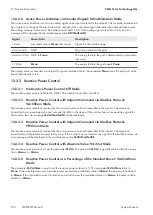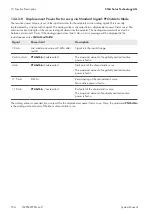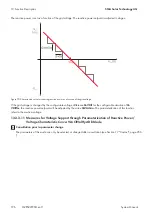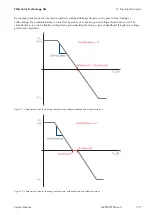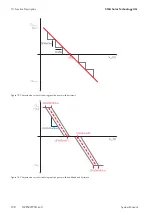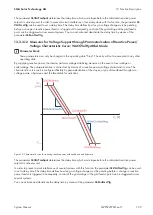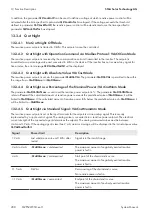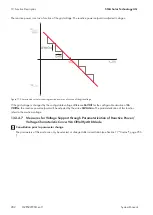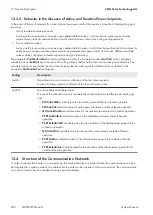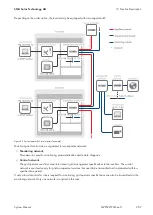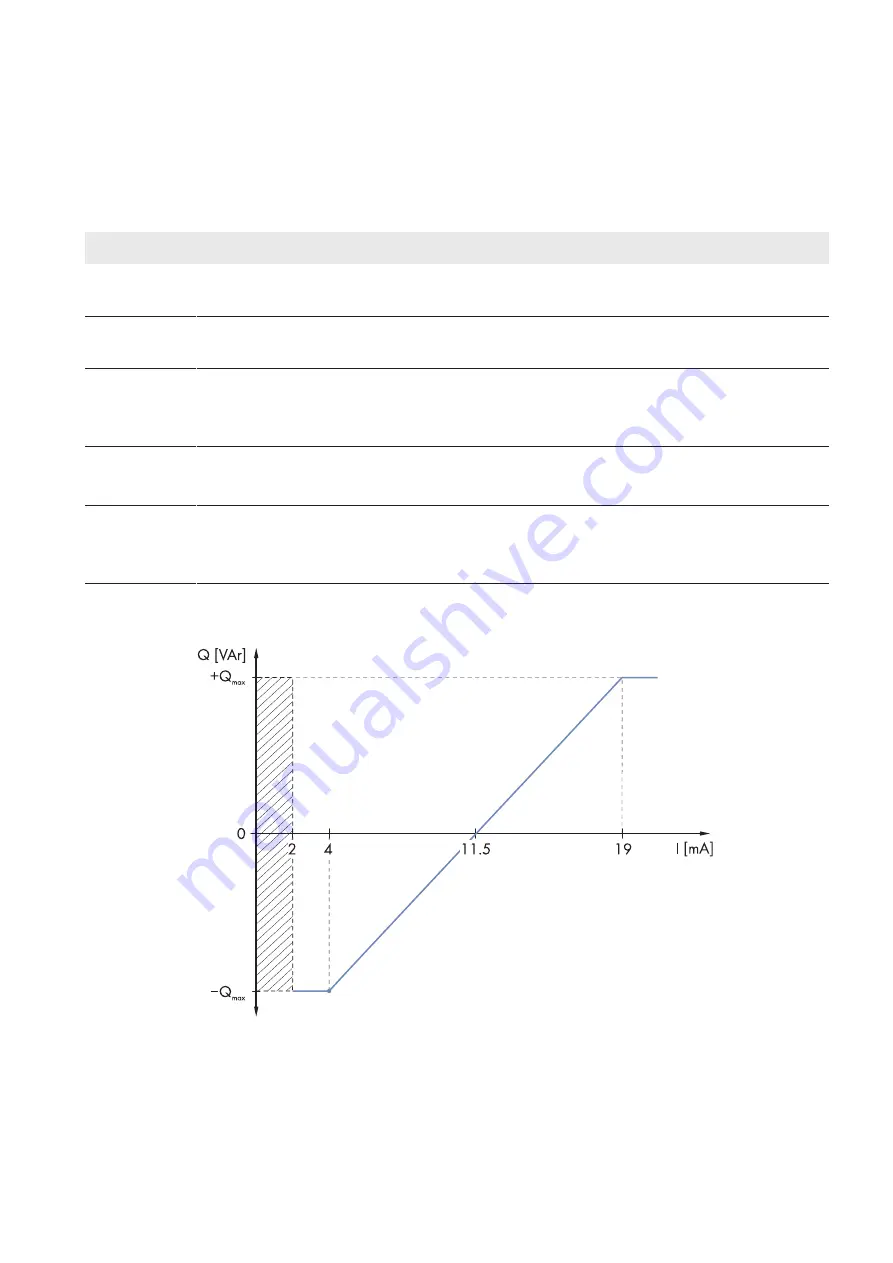
13.3.3.6 Reactive Power Setpoint via Standard Signal: VArCnstNomAnIn Mode
The reactive power setpoint is set at the input terminals for the setpoints via an analog signal. This is usually
implemented by a ripple control signal. The analog value is converted into a reactive power setpoint. The electrical
current strength of the connected signal determines the setpoint. The analog measured values must be between
4 mA and 19 mA. If the analog signal is less than 2 mA, an error message will be displayed in the instantaneous value
Q‑VArModFailStt
.
Signal
Power limit
Description
< 2 mA
Last valid mean value or 0 kVAr after
restart
Signal is in the invalid range.
2 mA to 4 mA
Qmax
/ underexcited
The maximum amount of negatively excited reactive
power is fed in.
4 mA
Qmax
/ underexcited
Start point of the characteristic curve
The maximum amount of negatively excited reactive
power is fed in.
11.5 mA
0 kVAr
Zero-crossing of the characteristic curve
No reactive power is fed in.
> 19 mA
Qmax
/ overexcited
End point of the characteristic curve
The maximum amount of positively excited reactive
power is fed in.
The analog value is converted to a setpoint for power limitation. Here, the parameter
Qmax
forms the end point of the
linear characteristic curve.
Figure 68: Limitation of the reactive power to the parameter
Qmax
13.3.3.7 Reactive Power Setpoint via Displacement Power Factor cos φ: PFCnst Mode
The reactive power setpoint is set via the parameters
PF‑PF
and
PF‑PFExt
. The parameter
PF‑PF
indicates the
displacement power factor cos φ and the parameter
PF‑PFExt
indicates the degree of overexcitation or
underexcitation.
13 Function Description
SMA Solar Technology AG
System Manual
193
MVPS22JP-SH-en-11
Summary of Contents for 1000-1SC
Page 257: ......

